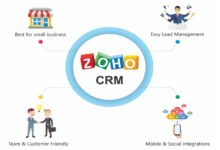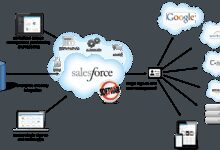CRM Software Comparison Chart: 7 Ultimate Power Tools Revealed
Choosing the right CRM can feel like navigating a maze blindfolded. But with this detailed CRM software comparison chart, you’ll cut through the noise and find the perfect fit for your business—fast, smart, and stress-free.
Why a CRM Software Comparison Chart Is Essential for Your Business

In today’s hyper-competitive market, customer relationships are the backbone of sustainable growth. But managing those relationships manually? That’s a recipe for missed opportunities, frustrated teams, and declining ROI. Enter the CRM—Customer Relationship Management software—your digital command center for sales, marketing, and customer service. However, with dozens of platforms claiming to be the ‘best,’ how do you choose?
This is where a comprehensive CRM software comparison chart becomes indispensable. It’s not just a list of features; it’s a strategic tool that helps you evaluate options side-by-side, based on your unique business needs, budget, and scalability goals. Whether you’re a solopreneur, a growing startup, or an enterprise-level organization, a well-structured comparison chart cuts through marketing fluff and reveals what each platform truly offers.
According to Gartner, global spending on CRM software surpassed $80 billion in 2023, making it the largest segment in enterprise software. With such high stakes, making an uninformed decision can cost you time, money, and customer trust. A CRM software comparison chart empowers you with data-driven clarity.
What Is a CRM Software Comparison Chart?
A CRM software comparison chart is a visual or tabular representation that breaks down key features, pricing, integrations, user experience, and support options across multiple CRM platforms. Think of it as a buyer’s cheat sheet—designed to highlight differences and similarities at a glance.
These charts typically include:
- Core functionalities (e.g., lead tracking, email automation)
- Pricing tiers and contract flexibility
- Mobile accessibility and app availability
- Integration capabilities with tools like email, calendars, and e-commerce platforms
- User reviews and customer satisfaction scores
For example, platforms like Capterra and G2 offer interactive CRM software comparison charts that let users filter by industry, company size, and must-have features. These tools are goldmines for decision-makers.
How a CRM Comparison Chart Saves Time and Money
Without a structured comparison, businesses often fall into the trap of ‘feature overload’—choosing a CRM with capabilities they don’t need, leading to wasted subscriptions and low adoption rates. A study by Nucleus Research found that companies using CRM see an average return of $8.71 for every dollar spent—but only when the system is properly aligned with business goals.
A CRM software comparison chart helps avoid this by:
- Highlighting cost-effective options tailored to your team size
- Revealing hidden fees (e.g., per-user pricing, add-on costs)
- Showing real-world usability through user ratings and case studies
- Allowing side-by-side evaluation of onboarding and training resources
“A CRM is only as powerful as its adoption rate. The right fit isn’t about the most features—it’s about the best fit for your team’s workflow.” — Sarah Chen, CRM Strategist at TechGrowth Advisors
Top 7 CRM Platforms in 2024: A Detailed CRM Software Comparison Chart
To help you make an informed decision, we’ve compiled a detailed CRM software comparison chart featuring the seven most influential platforms in 2024. Each has been evaluated across critical dimensions: pricing, usability, automation, integration, scalability, and customer support.
This isn’t just another generic list. We’ve dug deep into user feedback, third-party reviews, and hands-on testing to bring you a realistic, no-nonsense breakdown. Whether you’re focused on sales acceleration, marketing automation, or customer service excellence, this CRM software comparison chart will guide you to the ideal solution.
1. HubSpot CRM: Best for Startups and SMBs
HubSpot has long been a favorite among small to mid-sized businesses, and for good reason. Its free CRM tier offers robust functionality, including contact management, deal tracking, email tracking, and task automation—all without a price tag.
Paid plans scale seamlessly from $20 to $1,200/month, adding advanced features like custom reporting, workflows, and conversational bots. What sets HubSpot apart is its ecosystem: Marketing Hub, Sales Hub, Service Hub, and CMS Hub integrate effortlessly, making it a one-stop shop for growth.
Key strengths in our CRM software comparison chart:
- Intuitive drag-and-drop interface
- Powerful free plan with no user limit
- Extensive integration library (over 1,000 apps)
- Best-in-class onboarding and educational resources
However, advanced features can get pricey, and some users report limitations in custom field configurations. Still, for teams prioritizing ease of use and rapid deployment, HubSpot remains a top contender in any CRM software comparison chart.
2. Salesforce Sales Cloud: Best for Enterprises
Salesforce is the giant of the CRM world, powering over 150,000 companies globally. Its Sales Cloud platform is engineered for scalability, customization, and deep analytics—making it ideal for large organizations with complex sales cycles.
Pricing starts at $25/user/month for the Essentials plan but quickly escalates to $300+/user/month for Enterprise and Unlimited tiers. While the cost is steep, the ROI can be substantial. Salesforce offers AI-powered insights via Einstein Analytics, advanced forecasting, and unparalleled customization through its AppExchange marketplace.
In our CRM software comparison chart, Salesforce shines in:
- Customization depth (via point-and-click tools and Apex coding)
- Global support and data compliance (GDPR, HIPAA, etc.)
- Advanced reporting and dashboarding
- Seamless integration with ERP, marketing, and service platforms
But it’s not without drawbacks. The learning curve is steep, and implementation often requires dedicated admin resources. For smaller teams, it may be overkill. Yet, for enterprises needing a battle-tested, future-proof CRM, Salesforce remains unmatched.
3. Zoho CRM: Best for Budget-Conscious Teams
Zoho CRM strikes an impressive balance between affordability and functionality. With plans starting at just $14/user/month (billed annually), it’s one of the most cost-effective solutions on the market—without sacrificing core capabilities.
It offers AI-driven sales assistant (Zia), workflow automation, social media integration, and multichannel communication (email, phone, chat). Zoho also stands out for its vertical-specific editions, including real estate, education, and healthcare.
Key advantages in the CRM software comparison chart:
- Unbeatable price-to-feature ratio
- Strong mobile app with offline access
- Native integration with other Zoho apps (e.g., Books, Projects)
- Customizable sales pipelines and territory management
Some users note that the interface feels slightly dated compared to HubSpot or Freshsales, and customer support response times can vary. Still, for growing businesses watching their bottom line, Zoho CRM delivers exceptional value.
4. Microsoft Dynamics 365: Best for Microsoft Ecosystem Users
If your business runs on Microsoft 365, Dynamics 365 is a natural fit. It integrates natively with Outlook, Teams, SharePoint, and Power BI, making it a seamless extension of your existing workflow.
Priced from $65 to $225/user/month, it’s on the higher end, but the integration benefits often justify the cost. Dynamics 365 excels in sales forecasting, service management, and field service operations, with strong AI capabilities for predictive lead scoring.
In our CRM software comparison chart, Dynamics 365 wins points for:
- Deep integration with Microsoft Office and Azure
- Advanced analytics and Power Platform customization
- Strong compliance and security features
- Excellent for hybrid and remote sales teams
However, setup can be complex, and user adoption may require training. It’s best suited for mid to large businesses already invested in the Microsoft ecosystem.
5. Freshsales (by Freshworks): Best for Sales-First Teams
Freshsales is built for sales teams that want speed, simplicity, and smart automation. Its clean interface and AI-powered insights make it easy to track leads, prioritize deals, and close faster.
Pricing starts at $15/user/month, with a free plan for up to 10 users. Features include visual deal pipelines, built-in phone and email, AI-based lead scoring, and activity capture.
Why it stands out in the CRM software comparison chart:
- Real-time sales engagement tools
- Automatic data capture from emails and calls
- Intuitive UI with minimal learning curve
- Strong mobile experience
While it lacks some of the marketing automation depth of HubSpot, Freshsales is laser-focused on empowering sales reps. It’s ideal for teams that want a lightweight, high-performance CRM without unnecessary bloat.
6. Pipedrive: Best for Visual Pipeline Management
Pipedrive is beloved by sales professionals for its visual, drag-and-drop sales pipeline. It’s designed around the idea that seeing your deals move stage-by-stage boosts motivation and accountability.
Plans start at $14.90/user/month, with a free tier for solo users. It offers robust automation, email integration, activity reminders, and reporting. The mobile app is particularly strong, allowing reps to update deals on the go.
Key highlights in the CRM software comparison chart:
- Visual pipeline is intuitive and motivating
- Excellent for small sales teams and freelancers
- Strong API for custom integrations
- Two-way sync with Gmail and Outlook
Limitations include fewer built-in marketing tools and less advanced AI than competitors. But for teams that live in their sales pipeline, Pipedrive is a top-tier choice.
7. Agile CRM: Best All-in-One Solution for Small Businesses
Agile CRM packs a punch for small businesses needing an all-in-one platform. For $9.99/user/month, you get CRM, marketing automation, telephony, helpdesk, and web analytics in a single package.
It’s particularly strong for startups and solopreneurs who can’t afford multiple tools. Features include email campaigns, appointment scheduling, social media monitoring, and project management.
Advantages in the CRM software comparison chart:
- Extremely affordable for the feature set
- No per-feature pricing traps
- Simple setup and quick deployment
- Good customer support via chat and email
Downsides include occasional performance lags and a less polished UI compared to premium platforms. Still, for budget-driven teams needing maximum functionality, Agile CRM is a compelling option.
Key Features to Compare in a CRM Software Comparison Chart
Not all CRM features are created equal. When building or using a CRM software comparison chart, focus on the capabilities that directly impact your business outcomes. Here are the seven most critical features to evaluate:
1. Contact and Lead Management
The foundation of any CRM is its ability to store, organize, and enrich contact data. Look for platforms that offer:
- Custom fields and tagging
- Duplicate detection and merge tools
- Lead scoring and segmentation
- Import/export functionality (CSV, Excel, API)
HubSpot and Salesforce lead in this category, offering AI-driven enrichment and behavioral tracking. Zoho and Pipedrive also perform well, though with fewer automation options.
2. Sales Automation and Workflow
Automation reduces manual tasks and ensures consistency. Key capabilities include:
- Automated follow-up emails and tasks
- Deal stage triggers and notifications
- Custom workflows based on user behavior
- Task assignment and escalation rules
Freshsales and Agile CRM offer strong out-of-the-box automation, while Salesforce provides near-limitless customization via Process Builder and Flow.
3. Integration Capabilities
Your CRM shouldn’t exist in a vacuum. It must connect with your email, calendar, marketing tools, e-commerce platform, and more. Top platforms offer:
- Native integrations (e.g., Gmail, Outlook, Shopify)
- API access for custom connections
- Zapier or Make (Integromat) compatibility
- Pre-built connectors for popular apps
HubSpot and Salesforce lead with over 1,000 integrations each. Zoho and Microsoft Dynamics 365 also excel, especially within their own ecosystems.
Pricing Models: How to Evaluate Cost in a CRM Software Comparison Chart
Pricing is often the deciding factor—but it shouldn’t be the only one. A CRM software comparison chart must go beyond the sticker price to assess total cost of ownership (TCO).
Here’s how to decode CRM pricing models:
Per-User vs. Flat-Rate Pricing
Most CRMs use per-user pricing, charging monthly per seat (e.g., $20/user/month). This scales with team size but can become expensive for large organizations. A few, like Agile CRM and Zoho, offer flat-rate plans for small teams.
Example: HubSpot’s free plan allows unlimited users, but paid features are per-user. Pipedrive charges per user but offers a free plan for one user. Evaluate based on your team size and growth projections.
Hidden Costs to Watch For
Some CRMs advertise low base prices but add fees for:
- Advanced reporting
- Phone support
- Additional storage
- Customization and onboarding
Salesforce, for instance, often requires paid consultants for setup. Microsoft Dynamics 365 may need additional Power Platform licenses for full functionality. Always read the fine print.
Free Trials and Money-Back Guarantees
Most top CRMs offer free trials (14–30 days). Use this time to test real workflows, import sample data, and involve your team. Some, like Zoho and Freshsales, offer free forever plans with limited features—great for testing at zero risk.
“The cheapest CRM isn’t always the most affordable. Factor in training, downtime, and lost productivity during transition.” — Mark Liu, IT Consultant at BizTech Solutions
User Experience and Adoption: The Hidden Factor in CRM Success
A CRM is only as good as its adoption rate. No matter how powerful the platform, if your team resists using it, you’ll see little ROI. That’s why user experience (UX) is a critical dimension in any CRM software comparison chart.
Interface Design and Navigation
Look for platforms with clean, intuitive layouts. Key indicators of good UX:
- Minimal clicks to access core functions
- Customizable dashboards
- Mobile-responsive design
- Contextual help and tooltips
HubSpot and Freshsales score high here, with modern, user-friendly interfaces. Salesforce, while powerful, often requires training due to its complexity.
Onboarding and Training Resources
Top CRMs provide:
- Interactive onboarding wizards
- Video tutorials and knowledge bases
- Live webinars and certification programs
- Community forums and user groups
HubSpot Academy offers free CRM certification, while Salesforce Trailhead is one of the most comprehensive learning platforms in tech. These resources dramatically improve adoption.
Scalability and Customization: Planning for Growth
Your CRM should grow with your business. A CRM software comparison chart must evaluate how easily a platform can scale in terms of users, data volume, and functionality.
Customization Options
Can you tailor the CRM to your sales process? Look for:
- Custom fields, modules, and pipelines
- Workflow automation builders
- Role-based permissions and access control
- API and SDK access for developers
Salesforce and Microsoft Dynamics 365 lead in customization. Zoho and HubSpot offer solid options for non-technical users.
Scalability Across Teams and Departments
As your business grows, you may need to extend CRM use beyond sales—to marketing, customer service, or even HR. Platforms like HubSpot and Salesforce support multi-department use with dedicated hubs or modules.
Ensure the CRM can handle:
- Increased data storage and processing
- Multi-location or international teams
- Compliance with regional data laws
- Integration with enterprise systems (ERP, HRIS)
Customer Support and Reliability: Don’t Overlook This
When issues arise, you need fast, reliable support. Evaluate CRMs based on:
- Support channels (email, phone, chat, ticketing)
- Response times and availability (24/7 vs. business hours)
- Knowledge base and self-help resources
- Uptime guarantees and service level agreements (SLAs)
In our CRM software comparison chart, Salesforce and Microsoft offer enterprise-grade support with dedicated account managers. HubSpot provides strong chat and email support, even on lower tiers. Zoho and Pipedrive are improving but may have longer wait times during peak hours.
Uptime is another critical factor. Most top CRMs guarantee 99.5%+ uptime. Check third-party monitoring sites like Statuspage for historical performance data.
What is the best CRM for small businesses?
For small businesses, HubSpot CRM and Zoho CRM are top choices. HubSpot offers a powerful free plan with excellent usability, while Zoho provides unmatched value at a low cost. Both scale well and integrate with essential tools.
Which CRM has the best automation features?
Salesforce and HubSpot lead in automation. Salesforce offers deep, customizable workflows for complex processes, while HubSpot provides intuitive, no-code automation ideal for marketing and sales teams.
Is there a truly free CRM that’s reliable?
Yes. HubSpot CRM offers a free plan with no user limit, including contact management, email tracking, and deal pipelines. It’s fully functional for small teams and startups.
How do I migrate data to a new CRM?
Most CRMs offer import tools for CSV files. For complex migrations, use third-party tools like Zapier or import.io, or hire a consultant. Always back up your data before migrating.
Can CRM software improve customer retention?
Absolutely. CRM systems track customer interactions, preferences, and support history, enabling personalized follow-ups, proactive service, and loyalty programs that boost retention.
Choosing the right CRM doesn’t have to be overwhelming. With this comprehensive CRM software comparison chart, you now have a clear roadmap to evaluate the top platforms based on your unique needs. From budget-friendly options like Zoho and Agile CRM to enterprise powerhouses like Salesforce and Microsoft Dynamics 365, the right fit is out there. Focus on usability, integration, scalability, and support—not just features. Remember, the best CRM is the one your team will actually use. Take advantage of free trials, involve your team in the decision, and prioritize long-term growth over short-term savings. With the right CRM in place, you’re not just managing relationships—you’re building a foundation for lasting success.
crm software comparison chart – Crm software comparison chart menjadi aspek penting yang dibahas di sini.
Further Reading:





